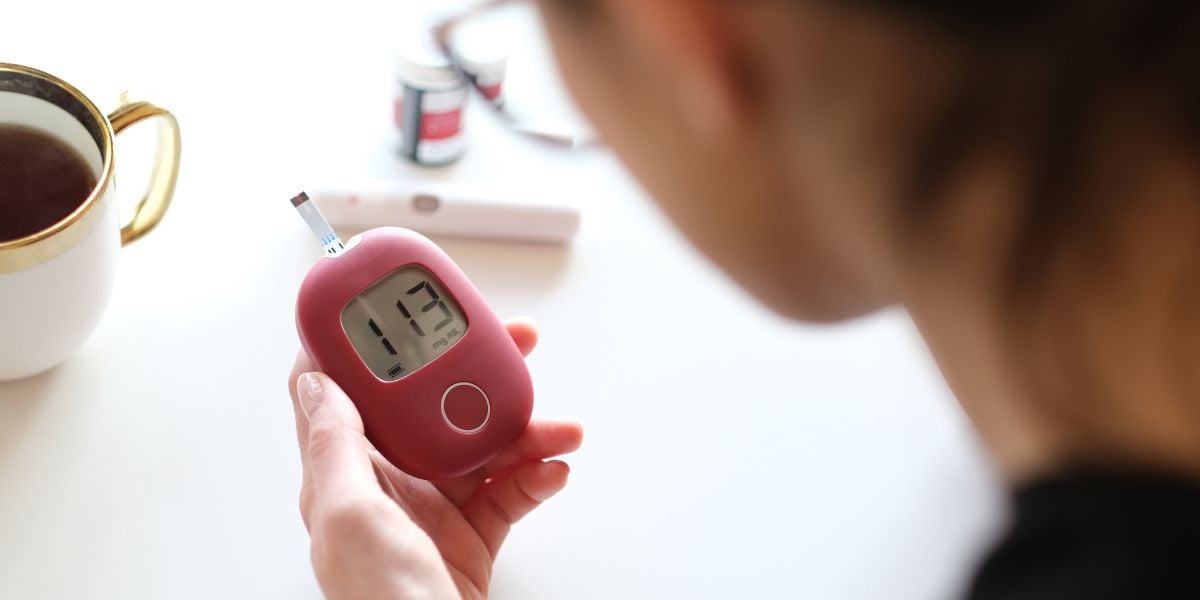Blood glucose meters in the UK should meet the standards set by the International Organization for Standardization (ISO).
However, there are a number of factors which could affect the accuracy of a blood glucose result.
ISO guidelines state that blood glucose meters should provide results which fall between the upper and lower error bounds, given in the table below, 95% of the time :
- Within ± 0.83 mmol/L of laboratory results at concentrations of under 4.2 mmol/L
- Within ± 20% of laboratory results at concentrations of 4.2 mmol/L or more
| Test result given | Lower bound | Upper bound |
|---|---|---|
| 1.0 | 0.17 | 1.83 |
| 1.5 | 0.67 | 2.33 |
| 2.0 | 1.17 | 2.83 |
| 2.5 | 1.67 | 3.33 |
| 3.0 | 2.17 | 3.83 |
| 3.5 | 2.67 | 4.33 |
| 4.0 | 3.17 | 4.83 |
| 5.0 | 4.00 | 6.25 |
| 6.0 | 4.80 | 7.50 |
| 7.0 | 5.60 | 8.75 |
| 8.0 | 6.40 | 10.00 |
| 9.0 | 7.20 | 11.25 |
| 10.0 | 8.00 | 12.50 |
| 12.0 | 9.60 | 15.00 |
| 14.0 | 11.20 | 17.50 |
| 16.0 | 12.80 | 20.00 |
| 18.0 | 14.40 | 22.50 |
| 20.0 | 16.00 | 25.00 |
Accuracy standards set to improve
By the end of May 2016, new standards are being implemented to ensure that blood glucose meters meet stricter accuracy standards.
Under the new standard, meters will need to meet the accuracy guidelines 95% of the time:
- Within ± 0.83 mmol/L of laboratory results at concentrations of under 5.6 mmol/L
- Within ± 15% of laboratory results at concentrations of 5.6 mmol/L or more
| Test result given | Lower bound | Upper bound |
|---|---|---|
| 1.0 | 0.17 | 1.83 |
| 1.5 | 0.67 | 2.33 |
| 2.0 | 1.17 | 2.83 |
| 2.5 | 1.67 | 3.33 |
| 3.0 | 2.17 | 3.83 |
| 3.5 | 2.67 | 4.33 |
| 4.0 | 3.17 | 4.83 |
| 5.0 | 4.17 | 5.83 |
| 6.0 | 5.10 | 7.06 |
| 7.0 | 5.95 | 8.24 |
| 8.0 | 6.80 | 9.41 |
| 9.0 | 7.65 | 10.59 |
| 10.0 | 8.50 | 11.76 |
| 12.0 | 10.20 | 14.12 |
| 14.0 | 11.90 | 16.47 |
| 16.0 | 13.60 | 18.82 |
| 18.0 | 15.30 | 21.18 |
| 20.0 | 17.00 | 23.53 |
Expired test strips
Always check the expiry date of test strips before performing a test as expired test strips could produce a false reading.
Testing in very warm or very cold temperatures
Accuracy of blood glucose meters can be affected by temperature.
Blood glucose meters are designed to be at their most accurate at room temperature.
If you need to test in very warm or very cold temperatures, refer to your meter’s user guide to see what temperature range the meter is most accurate at.
Testing in very humid conditions
Humid conditions can also affect meter accuracy.
Always remember to keep the test strip pot closed after a test has been performed and, where possible, avoid testing in very humid environments.
Coding mistakes
Some blood glucose meters require test strips which need a code to be entered into the meter before testing with a new batch of test strips. If the wrong code is entered, this can affect accuracy of the result.
A number of blood glucose meters these days do not need coding. Read more on no coding technology
Too little blood applied
If too little applied is applied to the strip, this can cause a false reading.
A number of blood glucose monitors won’t give a reading if this happens and will instead alert that too little blood has been applied or give an error message.
Contamination on skin
Dirty or wet hands can make readings very inaccurate in some cases. You should ensure your hands have been cleaned, with soap and water, and dried then before performing a blood test.
Be aware of alternate site testing and accuracy
Alternate site testing is when a blood test is performed on an area of skin that is not on the fingers. Certain blood glucose meters allow blood to be taken from places such as the forearm and palm of the hand.
Check with meter’s user guide whether alternate site testing is applicable to your meter.
If you are using alternate site testing, be aware that if blood sugar levels are rising or falling quickly, the blood glucose result from a finger will be more accurate than from an alternate site.
Problems with your blood glucose meter?
If you feel your meter is giving erroneous results. Contact the manufacturer of the blood glucose meter to report the problem




